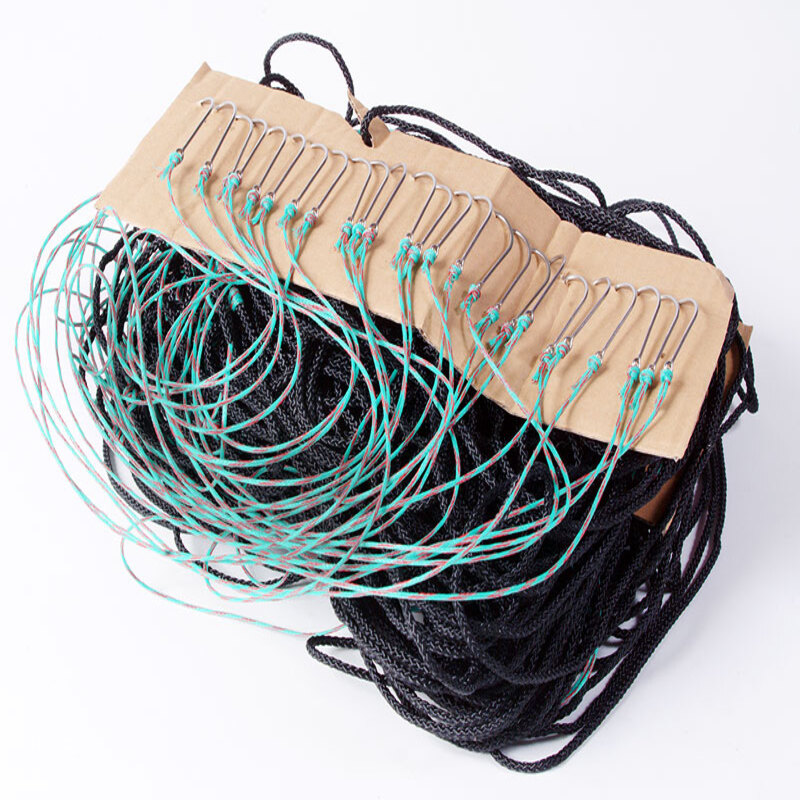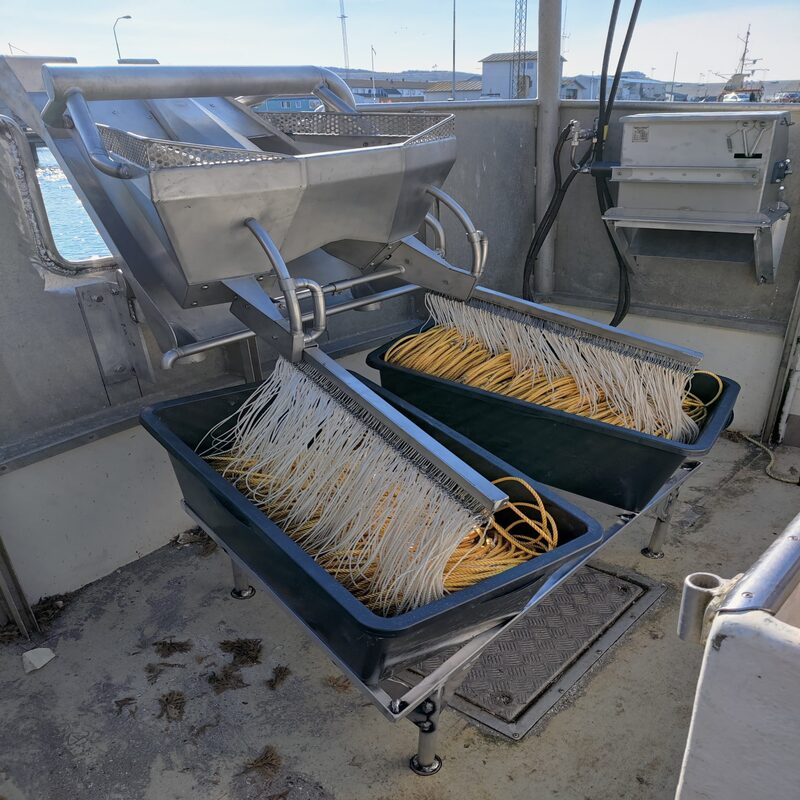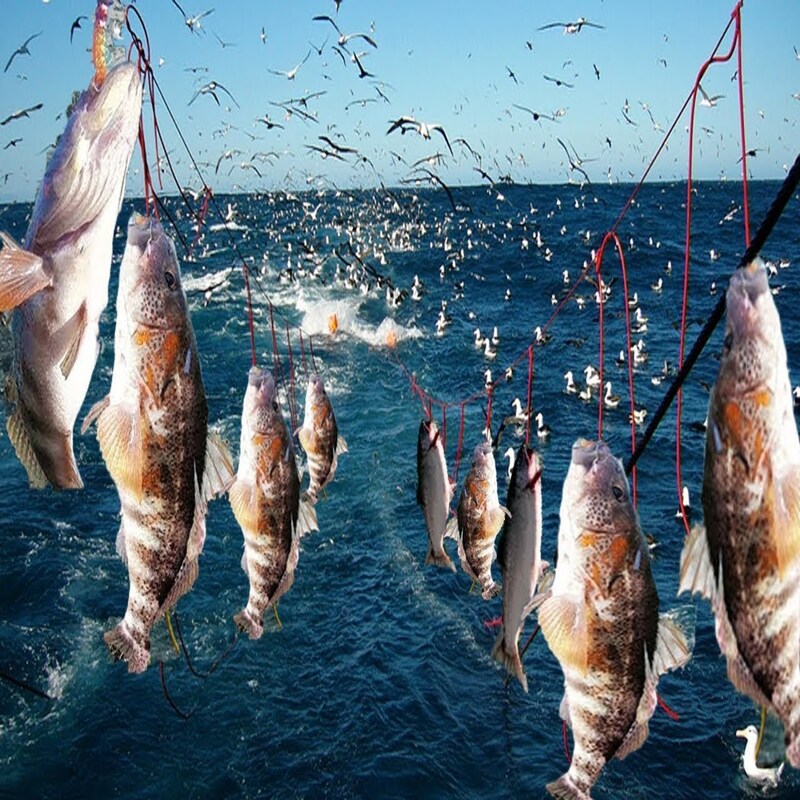Longline fishing is a widely used commercial fishing method that targets various species such as tuna, swordfish, and halibut. This technique involves deploying a main fishing line, known as the mainline, which can be up to several miles long. The mainline is equipped with several shorter lines, called branch lines or snoods, each carrying baited hooks. Understanding longline fishing is essential for appreciating its role in the fishing industry and its impact on marine ecosystems. Therefore, this comprehensive guide will explore the basics, types, benefits, and concerns of longline fishing. By understanding these aspects, you can gain a deeper insight into this significant fishing method.
The Basics of Longline Fishing
Longline fishing has specific methods and equipment essential for its operation. Therefore, understanding the basics ensures a comprehensive grasp of the technique.
Equipment Used
The main components of longline fishing equipment include the mainline, branch lines, baited hooks, and buoys. The mainline, typically made from durable materials like monofilament or braided lines, can stretch for several miles. The branch lines, attached at regular intervals, each carry a baited hook designed to lure target fish. Buoys are used to support and mark the position of the longline in the water, ensuring it remains suspended at the desired depth. Some advanced setups also include radio beacons for tracking. Therefore, the equipment used in longline fishing is crucial for its effectiveness.
Setting and Retrieving the Line
Setting the longline involves deploying the mainline and attaching the branch lines with baited hooks as the line is released into the water. The process can take several hours, depending on the line’s length and the number of hooks. Once the longline is fully deployed, it is left to soak for a predetermined period, allowing the bait to attract fish. After the soak period, the line is retrieved using hydraulic winches, bringing the catch to the surface. This retrieval process requires careful handling to prevent damage to the fish and ensure the catch’s quality. Therefore, setting and retrieving the line are critical steps in longline fishing.

Types of Longline Fishing
There are various types of longline fishing, each tailored to specific environments and target species. Therefore, exploring these types helps in understanding the technique’s versatility.
Pelagic Longline Fishing
Pelagic longline fishing targets species that inhabit the open ocean, such as tuna, swordfish, and sharks. The longline is suspended in the mid-water column or near the surface using buoys and floats. Baited hooks are attached at intervals along the mainline, designed to attract pelagic fish species. This method is highly effective in large, open water areas where pelagic species are abundant. Therefore, pelagic longline fishing plays a significant role in harvesting open-ocean species.
Demersal Longline Fishing
Demersal longline fishing targets species that dwell near the ocean floor, such as cod, halibut, and flounder. The longline is deployed along the seabed, with weighted branch lines anchoring the baited hooks close to the bottom. This method is ideal for fishing in coastal areas, continental shelves, and deep-sea environments. Demersal longline fishing requires careful positioning to avoid damaging the seabed and to maximize the catch of bottom-dwelling species. Therefore, demersal longline fishing is essential for targeting benthic fish species.
Benefits of Longline Fishing
Longline fishing offers several advantages that contribute to its widespread use in the commercial fishing industry. Therefore, understanding these benefits highlights its significance.
Efficiency and Versatility
One of the primary benefits of longline fishing is its efficiency in catching large quantities of fish. The method allows for the deployment of thousands of hooks over a vast area, significantly increasing the chances of a substantial catch. Longline fishing is also highly versatile, adaptable to various marine environments, and capable of targeting multiple species simultaneously. This versatility makes it suitable for both high seas and coastal waters, catering to diverse market demands. Therefore, the efficiency and versatility of longlining make it a valuable technique in commercial fisheries.
Reduced Bycatch
Compared to some other fishing methods, such as bottom trawling, longlining can have lower bycatch rates. Bycatch refers to the unintentional capture of non-target species, which can have detrimental impacts on marine ecosystems. Longline fishing allows for selective targeting based on the depth and placement of hooks, potentially reducing the capture of unwanted species. Additionally, using circle hooks and other bycatch reduction devices can minimize the harm to non-target species. Therefore, reduced bycatch is a significant advantage of longlining, contributing to more sustainable fishing practices.

Concerns and Challenges of Longline Fishing
Despite its benefits, longlining also poses several environmental and operational challenges. Therefore, understanding these concerns is vital for sustainable practices.
Impact on Marine Ecosystems
Longline fishing can have adverse effects on marine ecosystems, particularly when not managed responsibly. The indiscriminate nature of baited hooks can lead to the capture of vulnerable and endangered species, such as sea turtles, seabirds, and sharks. This bycatch can disrupt marine food webs and threaten the survival of these species. Additionally, the use of non-degradable fishing gear can result in marine debris, further harming ocean life. Therefore, the impact on marine ecosystems is a significant concern associated with longlining.
Operational Challenges
Operational challenges in longlining include dealing with harsh weather conditions, maintaining equipment, and managing the quality of the catch. Fishing in the open ocean exposes vessels and crews to unpredictable weather, requiring robust and well-maintained equipment. The retrieval process can be labor-intensive and time-consuming, necessitating skilled handling to ensure the fish’s quality. Furthermore, adhering to regulatory and conservation measures adds complexity to the operations. Therefore, overcoming these operational challenges is essential for the success of longline fishing ventures.
Sustainability Measures in Longline Fishing
Implementing sustainability measures is crucial for mitigating the environmental impact of longlining. Therefore, understanding these measures promotes responsible fishing practices.
Bycatch Mitigation Techniques
Adopting bycatch mitigation techniques helps reduce the capture of non-target species. Using circle hooks instead of J-hooks has been shown to decrease the incidence of bycatch, particularly for sea turtles. Deploying bird-scaring lines, known as tori lines, can prevent seabirds from getting caught on the hooks. Night setting, deploying lines at night, can reduce bycatch by targeting species that are less active or not present during these hours. Therefore, bycatch mitigation techniques are vital for promoting sustainable longlining.
Regulatory Measures
Regulatory measures play a crucial role in ensuring the sustainability of longline fishing practices. Fisheries management organizations and governments implement regulations such as catch quotas, gear restrictions, and closed seasons to protect fish populations and marine ecosystems. Monitoring and enforcing compliance with these regulations is essential for maintaining the long-term viability of target species and reducing environmental impacts. Additionally, participating in certification programs like the Marine Stewardship Council (MSC) can promote sustainable fishing practices and market access. Therefore, regulatory measures are integral to sustainable longline fishing.

Innovations in Longline Fishing
Technological advancements and innovations are driving improvements in longline fishing practices. Therefore, understanding these innovations highlights the future of the industry.
Electronic Monitoring Systems
Electronic Monitoring Systems (EMS) are revolutionizing the way longlining operations are monitored and managed. These systems use cameras and sensors to collect data on fishing activities, catch composition, and bycatch. EMS provides real-time information, enabling more accurate reporting and compliance with regulations. They also offer valuable insights into fishing practices, helping to identify areas for improvement and promoting transparency. Therefore, electronic monitoring systems are a significant innovation in enhancing the sustainability and efficiency of longlining.
Advancements in Gear Technology
Advancements in gear technology are improving the selectivity and efficiency of longlining. Innovations such as biodegradable hooks and lines are being developed to reduce marine debris and environmental impact. Enhanced hook designs, like weak hooks, allow for the release of larger, non-target species while retaining target fish. Improvements in buoy technology, including GPS-enabled buoys, facilitate better tracking and retrieval of longlines. These advancements contribute to more sustainable and effective fishing practices. Therefore, gear technology advancements are instrumental in the evolution of longline fishing.
Conclusion
Longline fishing is a significant method in the commercial industry, targeting various species with high efficiency and versatility. Understanding the basics, such as equipment used and the process of setting and retrieving the line, provides a comprehensive grasp of the technique. Different types, like pelagic and demersal longlining, cater to specific environments and species. The benefits include effectiveness in catching large quantities and potentially reduced bycatch. However, concerns such as impacts on marine ecosystems and operational challenges highlight the need for responsible practices. Implementing sustainability measures, including bycatch mitigation and regulatory compliance, is crucial for promoting more sustainable longlining. Innovations in monitoring systems and gear technology are driving improvements in the industry. Therefore, by following this comprehensive overview, you can appreciate the complexities and significance of longlining, understanding its role in the fishing industry and its future potential.
